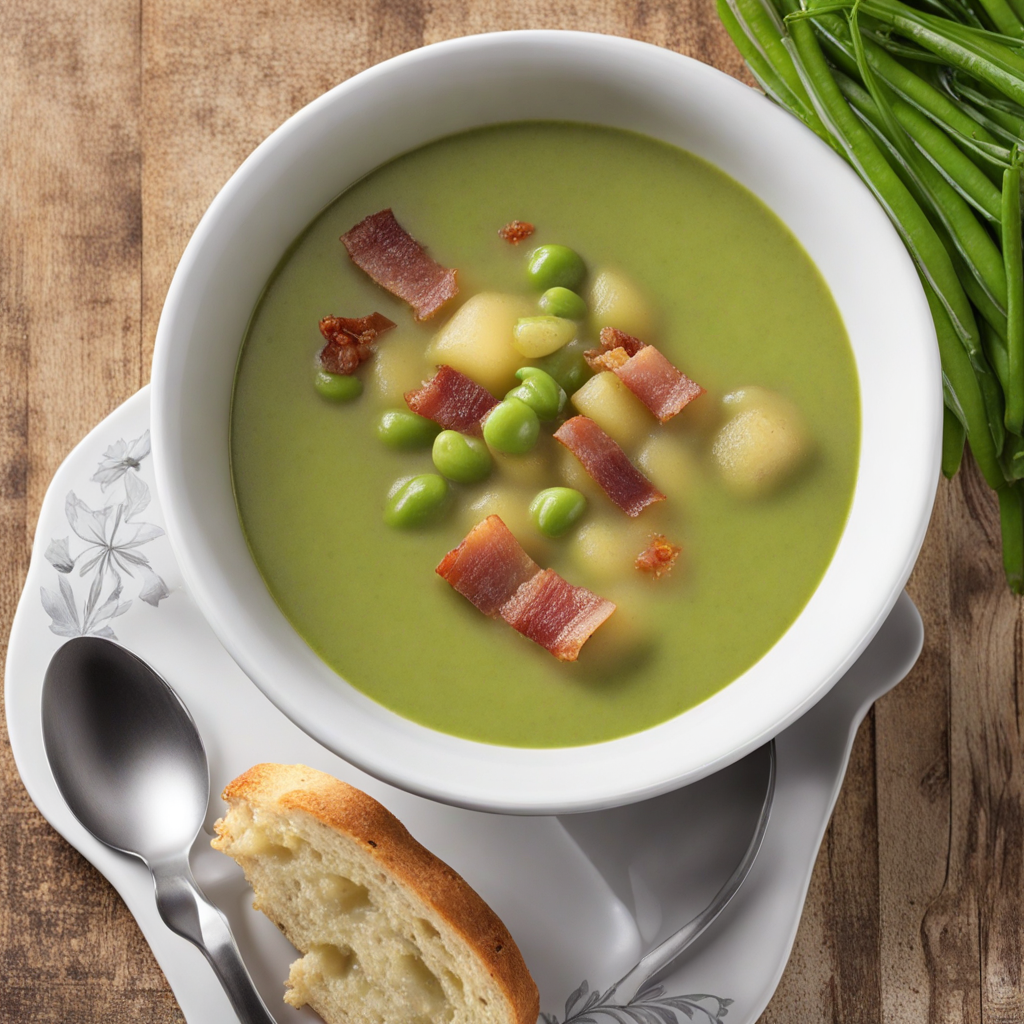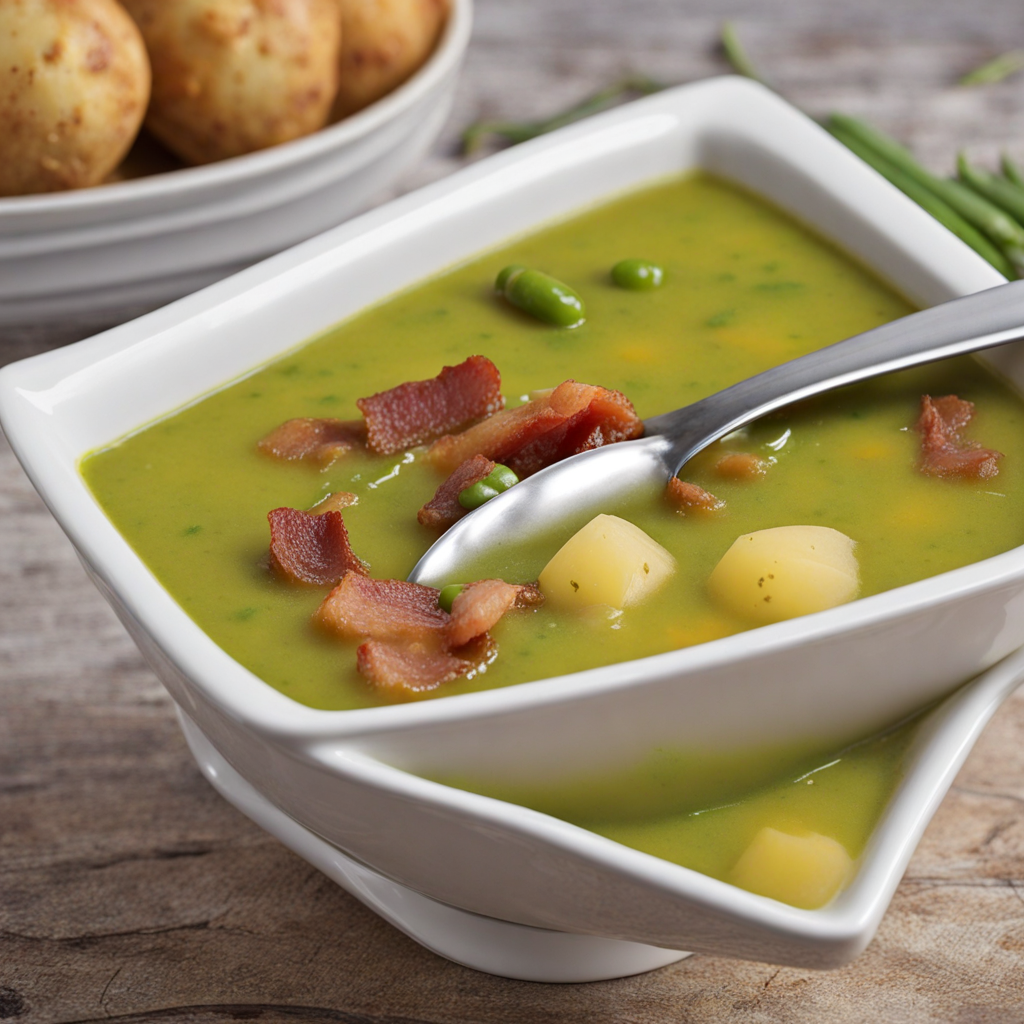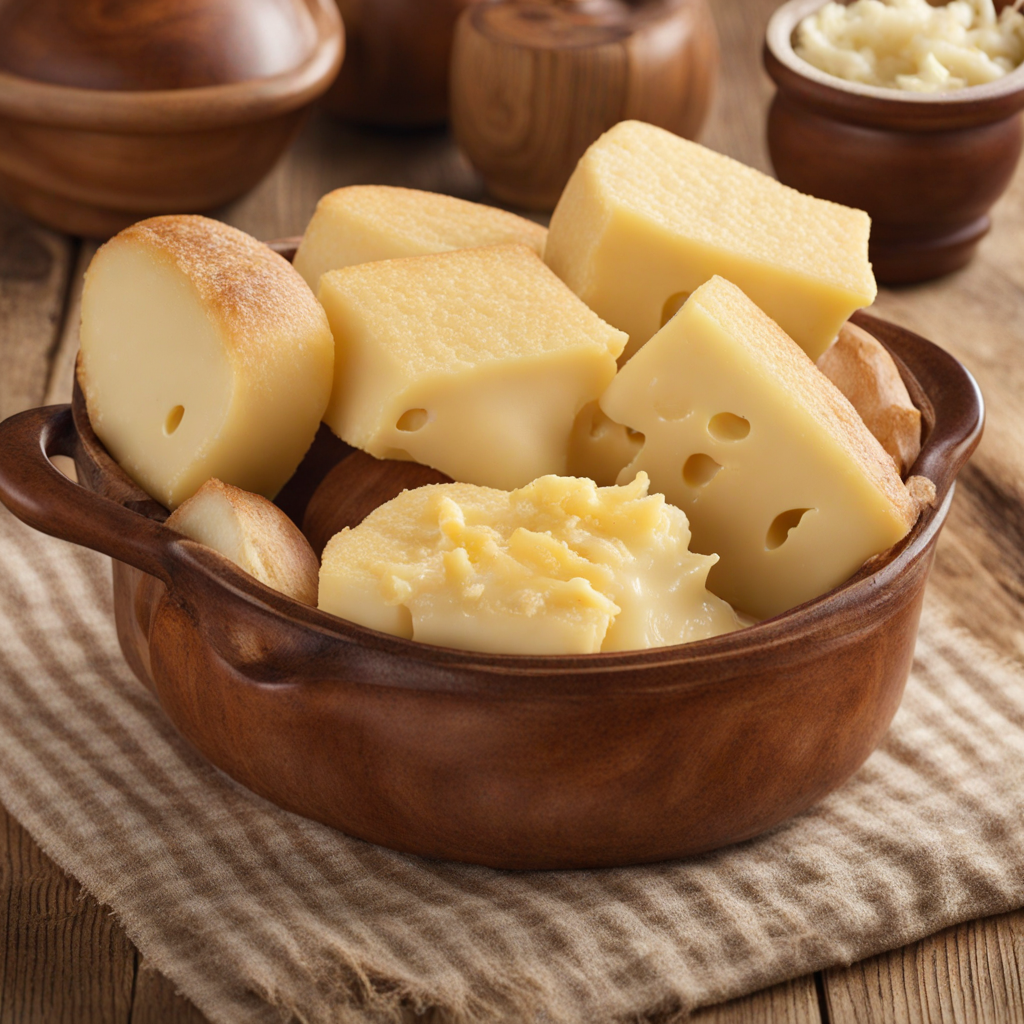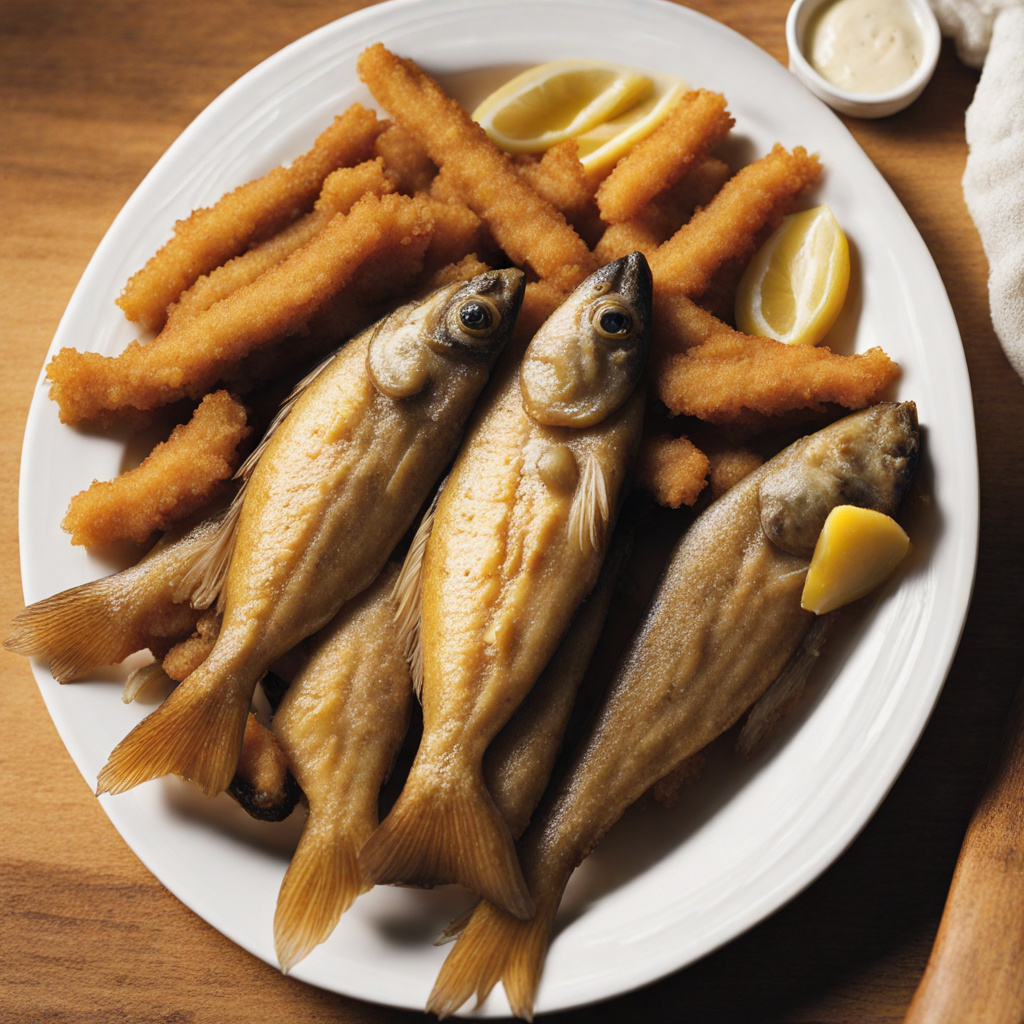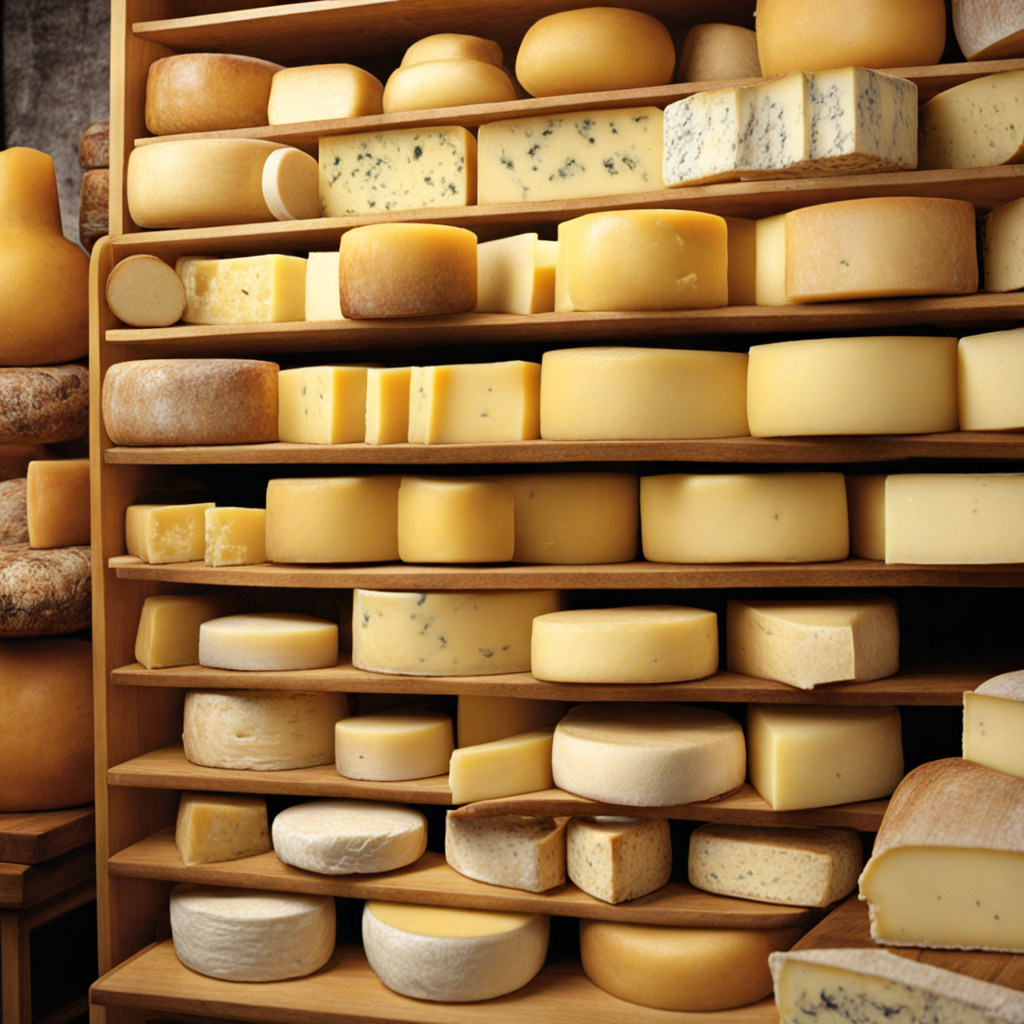Bouneschlupp
Bouneschlupp, a traditional dish from Luxembourg, is a flavorful and hearty green bean soup that embodies the rustic charm of Luxembourgish cuisine. The main ingredient, fresh green beans, is complemented by a medley of vegetables such as potatoes, carrots, and onions, which are simmered to perfection. These ingredients come together in a savory broth, often enriched with meat, usually smoked bacon or ham, which adds a depth of flavor and a touch of smokiness to the dish. The combination of textures and tastes creates a comforting experience that warms the soul, making it a beloved staple among locals. Each spoonful of Bouneschlupp reveals the vibrant colors of the vegetables, and the aroma captures the essence of home-cooked meals. The dish is typically seasoned with herbs like thyme and parsley, enhancing its freshness and giving it a delightful herbal note. Some variations include a splash of cream or a sprinkle of nutmeg, elevating the soup’s richness and complexity. Served alongside crusty bread or a dollop of mustard, Bouneschlupp is a dish that invites you to dive into the heart of Luxembourg's culinary heritage. While Bouneschlupp is often enjoyed year-round, it is especially popular during the colder months, when its warming qualities are most appreciated. It is not just a meal but a reflection of Luxembourg’s agricultural bounty, highlighting locally sourced ingredients that honor the land. Whether enjoyed in a cozy restaurant or made at home, this soup offers a unique taste experience that showcases the simplicity and heartiness of Luxembourgish fare, making it a must-try for anyone eager to explore new flavors.
How It Became This Dish
Bouneschlupp: A Culinary Journey Through Luxembourg Bouneschlupp, a quintessential dish of Luxembourg, embodies the essence of comfort food while encapsulating the rich cultural tapestry of this small European nation. Often translated as "bean soup," Bouneschlupp is much more than a simple preparation of legumes; it is a reflection of Luxembourg's agricultural heritage, community spirit, and culinary evolution through the ages. Origins of Bouneschlupp The roots of Bouneschlupp can be traced back to the agricultural practices of Luxembourg, where beans and other legumes have been staples in the local diet for centuries. The dish likely emerged during the Middle Ages when the population relied heavily on locally sourced ingredients. Beans, particularly the green variety, were not only nutritious but also easy to grow in the region's temperate climate. They provided sustenance during the harsh winters, making them an essential component of the Luxembourgish larder. Historically, Bouneschlupp was a humble dish, prepared by farmers and laborers who needed hearty meals to sustain their energy throughout long working days. It was often made from leftover ingredients, showcasing the frugal yet resourceful nature of Luxembourg’s rural communities. The use of potatoes, carrots, and onions alongside the beans reflects the influence of peasant cuisine, where simplicity and seasonality dictated what was served at the table. Cultural Significance Bouneschlupp is more than just a meal; it is a cultural emblem of Luxembourg. The dish represents the country's agricultural identity and its deep connection to the land. Beans, as a crop, have a symbiotic relationship with the soil, enriching it as they grow. This has made them integral to the farming cycle in Luxembourg, where crop rotation is vital for maintaining soil health. Traditionally, Bouneschlupp is often enjoyed during family gatherings, especially during the colder months. It serves as a centerpiece for communal meals, fostering togetherness and the sharing of stories, much like other comfort foods around the world. In Luxembourgish homes, it is common to find Bouneschlupp served with a slice of crusty bread, emphasizing the importance of bread in Luxembourg's culinary tradition. Moreover, Bouneschlupp is often linked to local festivals and community events, where it is served to celebrate harvests and seasonal changes. The dish has become a symbol of hospitality, and its preparation often involves families gathering to cook in unison, reinforcing social bonds and cultural practices that have been passed down through generations. Development Over Time As Luxembourg underwent industrialization and urbanization in the 19th and 20th centuries, the way Bouneschlupp was prepared and consumed began to evolve. While the traditional recipe remained popular, modern interpretations began to emerge. The introduction of new ingredients, such as smoked meats or sausages, added depth and flavor to the soup, aligning it with contemporary tastes. In the post-war era, as Luxembourg became more affluent and diverse due to immigration and globalization, Bouneschlupp began to reflect a fusion of culinary influences. The immigrant communities brought their own flavors and techniques, enriching the traditional recipe. For example, the addition of spices and herbs from Mediterranean and Asian cuisines began to find their way into Bouneschlupp, showcasing Luxembourg's evolving palate. Today, Bouneschlupp is celebrated not only within homes but also in restaurants and cafes across the country. Chefs have embraced the dish, elevating it to gourmet status while still honoring its rustic roots. Contemporary versions may feature artisanal breads, locally sourced organic vegetables, and even gourmet toppings, catering to a modern audience that values quality and sustainability. Contemporary Relevance In recent years, there has been a resurgence of interest in traditional foods, with an increasing number of people seeking out authentic, locally produced dishes. Bouneschlupp has benefited from this trend, with chefs and home cooks alike experimenting with variations that highlight seasonal ingredients. The dish is now often seen on menus during the colder months, where it is recognized for its warming and nourishing qualities. Moreover, Bouneschlupp is often featured in Luxembourg's culinary festivals, such as the "Fête de la Gastronomie," which celebrates local cuisine and promotes the importance of regional ingredients. These events not only pay homage to traditional dishes but also encourage the younger generation to appreciate and continue their culinary heritage. Internationally, Luxembourg's food scene is gaining recognition, and Bouneschlupp has become a symbol of the country's culinary identity on global platforms. It is increasingly included in food festivals and cultural events outside of Luxembourg, where it introduces people to the flavors and traditions of this small yet vibrant nation. Conclusion Bouneschlupp is a dish that transcends mere sustenance; it is a testament to Luxembourg’s agricultural history, cultural significance, and evolving culinary landscape. From its humble origins in the fields of Luxembourg to its contemporary interpretations in cosmopolitan kitchens, Bouneschlupp has a story rich in community, resilience, and adaptation. As Luxembourg continues to grow and change, so too does its cuisine, but Bouneschlupp remains a beloved emblem of the past and present—a dish that brings people together, nourishes the body and soul, and connects generations through the simple joy of sharing a meal. Whether enjoyed in a rustic farmhouse or a modern bistro, Bouneschlupp will always evoke a sense of home and heritage, embodying the heart and spirit of Luxembourg.
You may like
Discover local flavors from Luxembourg


